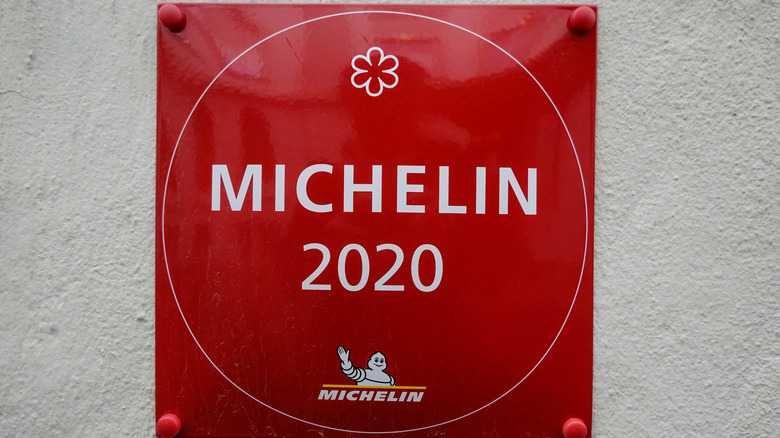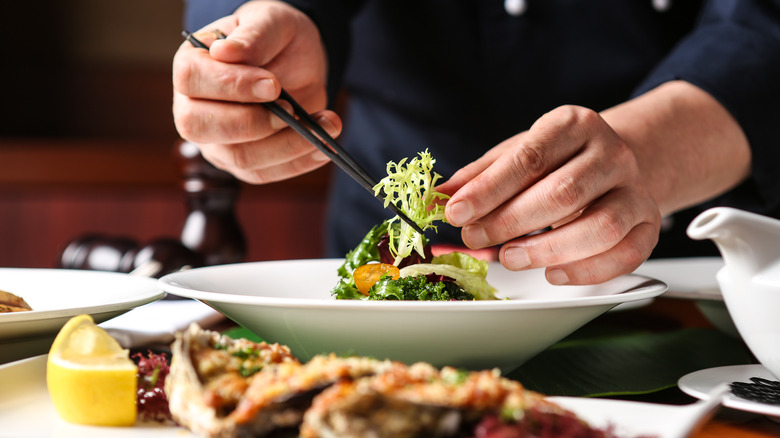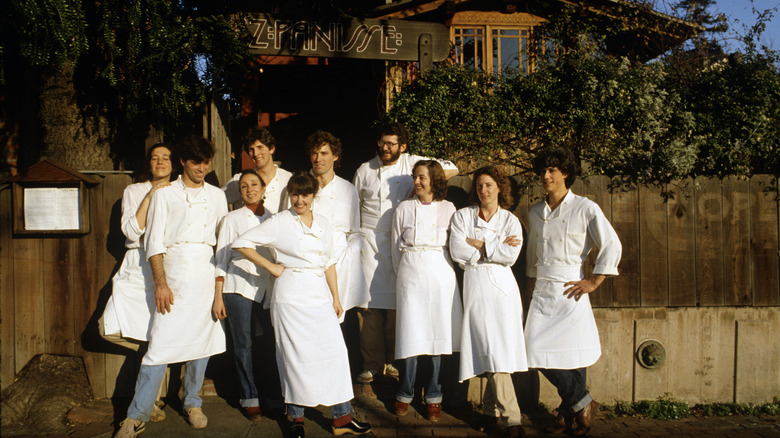The Truth About What It Really Takes To Earn A Michelin Star
Have you ever eaten at a restaurant with a Michelin star? While the Michelin Guide lists nearly 1,400 of these in the U.S., every single one is located in the NYC, Chicago, or DC areas, or in California. And not every restaurant is the kind to require a second mortgage to finance a meal –- at Chicago's Pho 777, for example, you can order a bowl of the signature soup for under $11.
Still, for most of us, the nearest Michelin-listed establishment may be too far to drive for dinner, and we're also way, way out of the delivery zone. And, there are even fewer restaurants on the star level. In fact, just appearing in the Michelin Guide doesn't necessarily mean that a restaurant also rates a star. At present, just 182 establishments have this distinction: 138 of these are one-star restaurants, 31 are two-star, and only 13 restaurants in the entire United States hold the coveted three-star rating.
If distance and/or expense have kept you from experiencing a Michelin-starred meal, you may be wondering what all the fuss is about. After all, wasn't Burger King campaigning for a Michelin star last year? (Well, yeah, but the Michelin Guide for Belgium shows that they failed in their bid for this stellar status symbol.) Gwendal Poullennec, the international director of Michelin Guides, spoke with Mashed to give us some background info on what it means for a restaurant to earn one (or more) of these sought-after stars.
How a restaurant earns its Michelin star(s)
Michelin Guides International Director Gwendal Poullennec says that the guide's inspectors judge all the restaurants they visit based on five criteria, telling us these are "the quality of the products, harmony of flavors, mastery of the techniques and flavors, personality of the chef in [their] cuisine, and consistency between visits." The Michelin stars, the director says, are awarded each year, so a restaurant can't just rest on its laurels after its earned the distinction. A lapse in quality could mean that the restaurant loses its star when the next year's rankings come out.
Needless to say, restaurants really want to hang on to the Michelin stars they've earned, or to keep striving if they remain starless. "The impact of the Michelin Guide ripples throughout the entire restaurant industry, from food producers and suppliers to restaurant staff," Poullennec said to Mashed. "Restaurants experience a 50% average increase in revenue growth following their first Michelin Star award."
There's now a new type of Michelin star
Poullennec was excited to share with us information about a new star the Michelin Guide recently introduced. This "sustainability distinction," as he terms it, is called the Michelin Green Star. He describes the Green Star winners as a "collection of restaurants bring[ing] together chefs with a common cause," and says that these chefs' "inspiring and virtuous initiatives and methods help to raise awareness of the importance of environmental issues."
In the United States, the Michelin Guide lists just nine Green Star restaurants, all of which are located in California. (Why are we not surprised?) These temples to sustainable gastronomy include three that also hold the Michelin one star rating, and, incredibly, four three-star establishments. There are also a few otherwise un-starred restaurants that hold a mere Plate Michelin, a designation that the Guide says means they "simply serve good food."
Simple or not, one of these Michelin Green Star restaurants is a true legend: Chez Panisse, the iconic Berkeley eatery where chef Alice Waters is said to have kicked off the whole farm-to-table movement nearly half a century ago. Chez Panisse may have had to wait a few decades for the rest of the world to share their environmental values, but there's no doubt Waters' restaurant has long deserved that Michelin Green Star.


